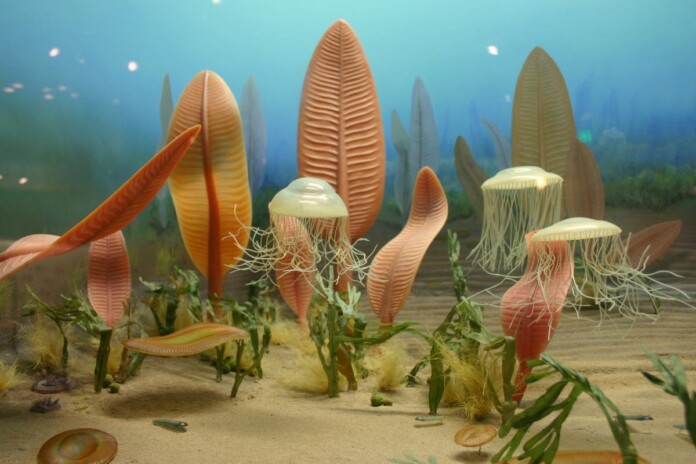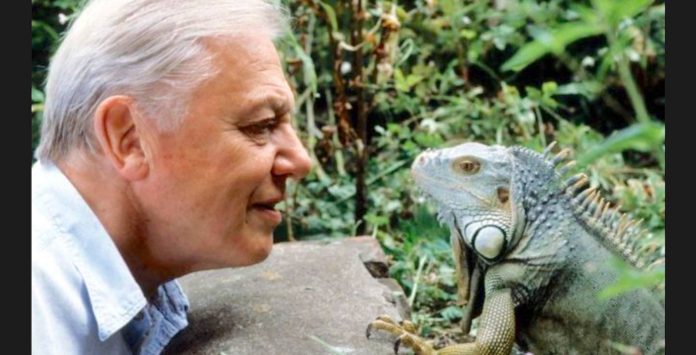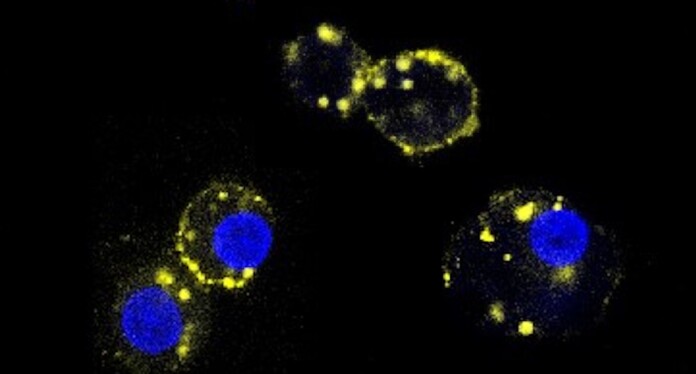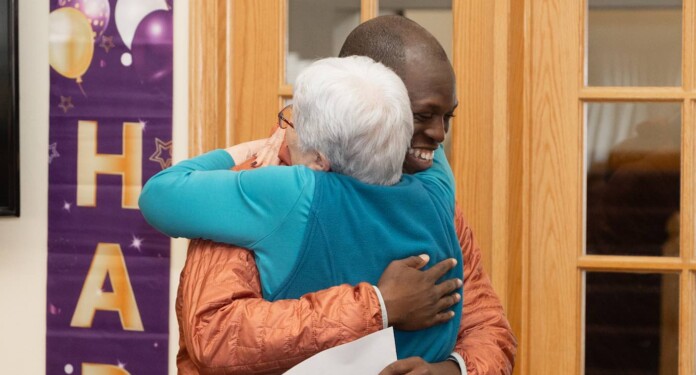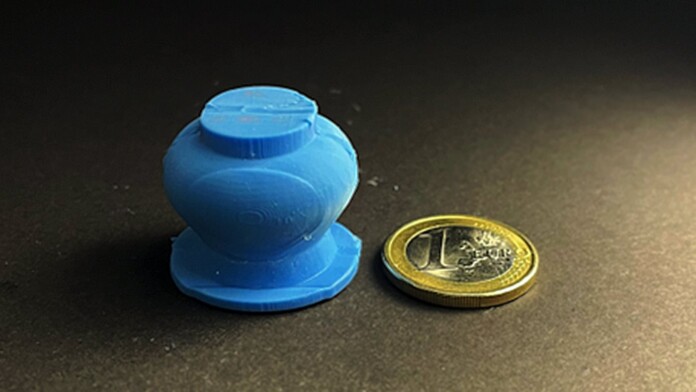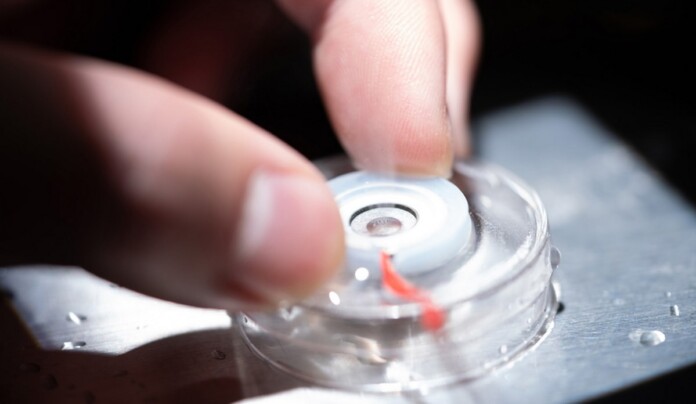638 years ago today, the Treaty of Windsor, the world’s oldest international accord still in force, was signed between Great Britain and Portugal. It was signed and sealed by King Richard II of England and King John I of Portugal to cement commercial ties and mutual defense. Subjects of one king had the rights, under the treaty, to relocate to the kingdom of the other king without special procedure, and it also gave the right of both countries to trade on the terms enjoyed by the subjects of that country, rather than their monarchs. READ more… (1386)
Thousands Volunteer to Help Jane Austen Museum Solve Mystery of ‘Spidery’ Script in Brother’s Biography
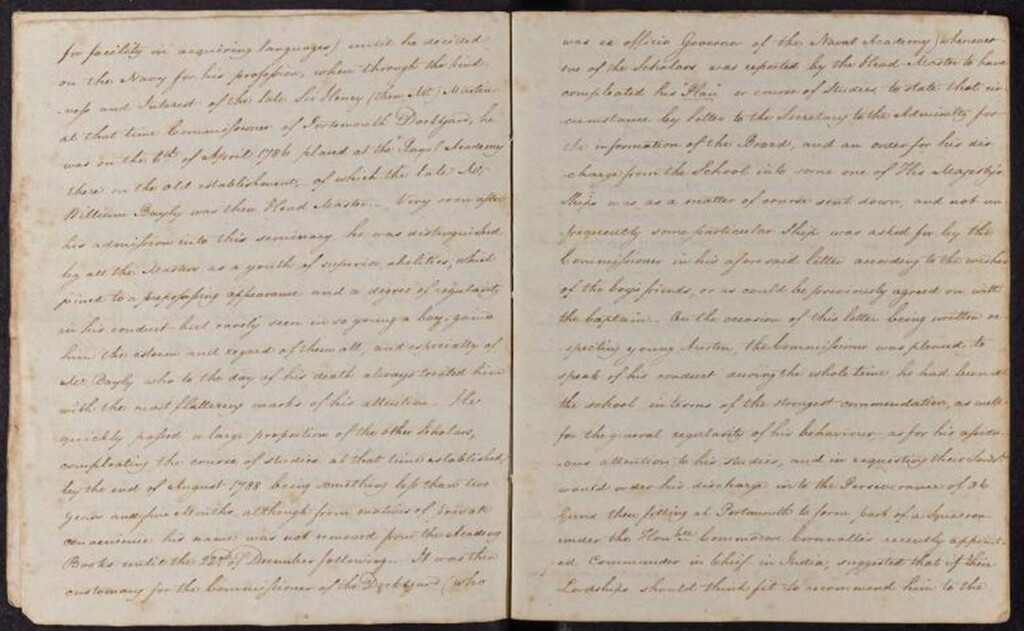
An interesting event happened in the domain of classic English literature recently when a 78-page memoir of Jane Austen’s brother came into the hands of the Jane Austen House Museum, who were having difficulty reading the handwriting.
Comparing it to a citizen science project, the museum initially invited anyone interested in helping to email a request for a single page to transcribe, but despite being dead for over 200 years, the response from Austen fans was simply extraordinary, as the numbers who stepped up to help nearly broke the museum’s email server.
Sir Francis Austen had a long career in the Royal Navy, and a manuscript biography of his life and a book of watercolor paintings he made were both acquired at auction by the Jane Austen House Museum with financial backing from a national non-profit.
Along with pages written about his work in the Navy, with stations as far as Egypt, India, and China, it also contains content about home life including his childhood at Chawton, and settling in Southampton with his sisters.
“Jane Austen left so little facts on her life,” said head of collections, interpretation, and engagement at Jane Austen’s House, Sophie Reynolds.
“This is another piece of the puzzle that can go into the museum. Scholars will find it fascinating to pull things out. It’s about filling in some more of the details that sort of surrounded her. We can see the world a little bit as she would have done.”
The manuscript is written in the third person, and the last third was likely done with an arthritic hand, making the already extremely cultured penmanship “spidery” and even more difficult to understand.
Writing Pride and Prejudice, Sense and Sensibility, Mansfield Park, Emma, Northanger Abbey, and Persuasion all from a cottage in the Hampshire village of Chawton, Austen experienced only moderate success in her lifetime.
MORE EXCERPTS FROM HISTORY: 2,000-Year-old Scroll Burnt in Pompeii Decoded and Read for First Time by Three Genius Students
Since her books first appeared in Richard Bentley’s Standard Novels series in 1833, fifteen years after her death, they have rarely been out of print, a testament to which was the number of people who emailed the museum about helping with the transcribing.
“We have been completely overwhelmed by the incredible response we have had to our transcription project, receiving thousands of responses in just 24 hours,” the museum wrote. “As a result, we are no longer able to receive applications. Thank you for your interest and support.”
It will be fascinating to hear what’s uncovered in the coming months.
SHARE This Intriguing Story With Anyone You Know Who Loves Austen’s Books…
An Ancient Collapse of Earth’s Magnetic Field Led to Multicellular Animals Emerging
A fascinating new discovery offers “tantalizing” evidence for the origin of multicellular development in life on Earth.
It seems related to something that had perhaps never happened before, and certainly has never happened since: a near-total collapse of the Earth’s magnetic field.
650 million years ago, there was little going on across the Earth worth writing about, but shortly after, when multicellular life did begin to emerge and diversify in a period known as the Edicarian, it started within a 26 million-year window of time when the Earth’s magnetic field plummeted to one-thirtieth its current strength.
The authors of this geologic discovery from the University of Rochester point out that this would have driven a rapid decrease in hydrogen content in the Earth’s atmosphere and rapidly increased oxidization of the air and oceans, allowing metabolically demanding activities like movement and propulsion to become more and more possible.
The Edicarian Period, lasting from 635 to 565 million years, currently offers the oldest confirmed fossil evidence of multicellular life on Earth. For their time they were both diverse and complex, but in comparison to any other epoch, they were extremely primitive, and consisted mostly of tubular and frond-shaped creatures but also some that had developed locomotion, including the earliest jellyfish.
Generated by the molten iron core of Earth, the magnetic field is essential for life. It does something far more important than make our compasses work or create the Aurora Borealis, it protects the planet from streams of radiation coming off the Sun called solar wind.
“Oxygen has long been identified as a key “environmental gatekeeper,” allowing for evolutionary innovation and for meeting the energy demands of animals,” the authors write.
“Although sponges and microscopic animals can survive at low levels of dissolved oxygen, macroscopic, morphologically complex, and mobile animals require a greater amount of oxygen to support their metabolic demands.”
A weakened magnetic field would allow the Sun’s radiation to strip away lighter molecules like hydrogen from the Earth’s atmosphere, and hydrogen can enter space through non-thermal processes as well. This could have resulted in an increase in oxygen sufficient enough to allow early macroscopic life to evolve in the sea.
YOU’LL ALSO LIKE: Amateur Paleontologists Discover Site of Epic Importance–400 Fossils from 470M Years Ago Amid Global Warming
Study author Professor John Tarduno and the co-authors describe the association between the earliest forms of complex life and this fall in the magnetic field, which they discovered through a particular kind of crystal called plagioclase which records magnetic signatures superbly well, as “tantalizing but unclear.”
In their study, the scientists point out that oxygen content in samples of life from the Edicarian period is significantly higher than in samples from previous periods.
MORE GEOLOGIC RESEARCH: Huge Black Diamond Sold for $4.3 Million–and No One Knows Where it Came From or How it Was Formed
The team previously discovered that the geomagnetic field recovered in strength during the subsequent Cambrian Period, when most animal groups began to appear in the fossil record, and the protective magnetic field was reestablished, allowing life to thrive.
“If the extraordinarily weak field had remained after the Ediacaran, Earth might look very different from the water-rich planet it is today: water loss might have gradually dried Earth,” Tarduno told Rochester Univ. press.
SHARE This Very Interesting Potential Watershed Moment For Life On Earth…
14-Year-old Grabs Wheel of His School Bus After Driver Passes Out with Foot on the Gas

An eighth-grade Wisconsinite is being hailed as a hero after grabbing hold of the wheel of his school bus after the driver lost consciousness.
His heroics have earned him plaudits from the mayor’s office, city council, fire and rescue, and the police department, and the young man has said the incident has made him feel more confident.
It started when Acie Holland III boarded his school bus as per his normal routine in April. He joked with the bus driver for a moment, then she put on some headphones, and the bus rumbled off.
Holland though told CNN he understood something wasn’t right when the driver began to appear dizzy. Soon after, her head dropped, but the bus continued to accelerate past a turn on the route.
“She turned the corner and there’s another street that we usually turn on. She pressed the gas and went past the corner, and I looked up,” Holland said.
Coming to the front, he found the driver unresponsive and the bus veering into oncoming traffic.
In what he later described as a fight or flight situation, Holland moved the driver aside, took the wheel and safely parked the bus on the side of the road, calling 911 after it had come to a halt and telling each student to call their parents.
OTHER STORIES LIKE THIS: ‘Hero’ 13-Year-old Grabs Steering Wheel and Stops School Bus After Driver Passes Out (Watch)
The driver had suffered a medical emergency and would eventually have to go receive treatment, CNN reports. At first, Holland’s father, Acie Holland II, wasn’t sure if his son was telling the truth, but when it did eventually become clear, Holland Sr. said he wasn’t surprised.
“He’s always been a person where he’s real quick on his feet. That’s one of my things that I know he’s capable of, not on the school bus, but just in general, being able to help someone in need,” Holland Sr. told CNN. “But I am proud of what he did.”
MORE HEROIC TEENS: Teen Hailed as Hero for Saving 3 Girls And an Officer After Vehicle Sinks in River
Mr. Holland II owns a garage, and Holland III says it’s around the shop that he had grown accustomed to the functions of automobiles enough to feel confidant grabbing the wheel of that bus.
The school said that Holland’s leadership and compassion is something they witness daily, but that April’s incident took it to the “next level.”
SHARE Holland’s Heroics With Your Friends On Social Media…
“People change and forget to tell each other.” – Lillian Hellman
Quote of the Day: “People change and forget to tell each other.” – Lillian Hellman
Photo by: Hu Jiarui
With a new inspirational quote every day, atop the perfect photo—collected and archived on our Quotes page—why not bookmark GNN.org for a daily uplift?

Good News in History, May 8
Happy 98th Birthday to Sir David Attenborough, the legendary naturalist, broadcaster and producer who created and wrote the influential documentaries Life on Earth (in 13 parts) and The Life of Birds, among many others. After studying Natural Sciences at Cambridge University, he launched his famous Zoo Quest BBC series in 1954. Life on Earth in 1979 led to The Living Planet (1984), The Trials of Life (1990), a celebration of Antarctica called Life in the Freezer (1993), and 1995’s epic The Private Life of Plants (1995). His services to television were recognized in 1985, when he was knighted as Sir David Attenborough. WATCH a fun interview about his exotic pets… (1926)
Experimental Type 1 Diabetes Drug Shields Pancreas Cells from the Usual Crippling Immune System Attack
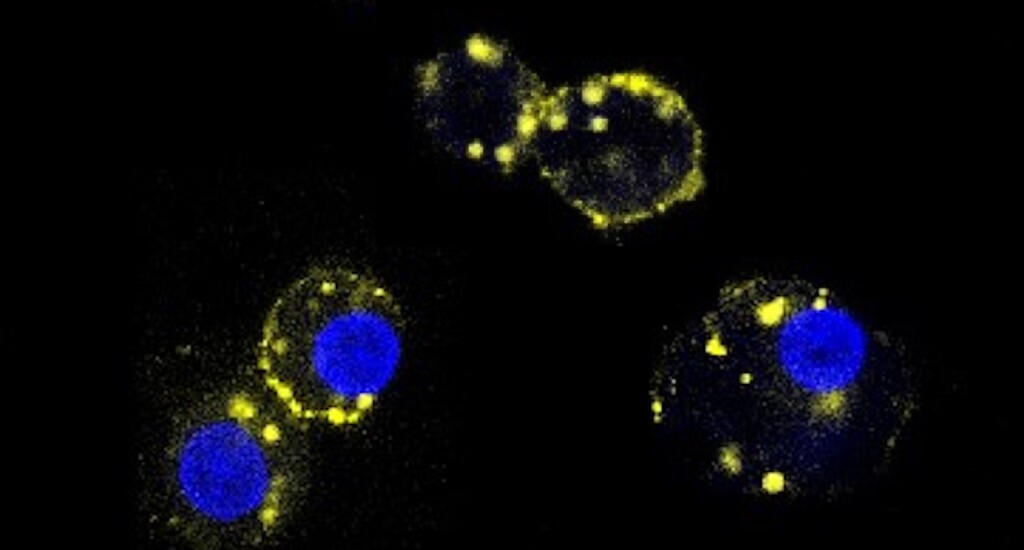
Scientists at Johns Hopkins say that an experimental antibody drug appears to prevent and reverse the onset of type 1 diabetes in mice—and often lengthen their lives.
The drug called mAb43 is unique, according to the researchers, because it targets insulin-making beta cells in the pancreas directly and is designed to shield those cells from attacks by the body’s own immune system cells.
The drug’s specificity for such cells may enable long-term use in humans with few side effects, say the researchers. Such monoclonal antibodies are made by cloning, or making identical replicas of, an animal or human cell line.
The findings, reported in the May issue of Diabetes, raise the possibility of a new drug for type 1 diabetes, an autoimmune condition that affects about 2 million American children and adults and has no cure or means of prevention.
Unlike type 2 diabetes, in which the pancreas makes too little insulin, in type 1 diabetes, the pancreas makes no insulin because the immune system attacks the pancreatic cells that make it, cutting off the body’s ability to regulate blood sugar levels.
Dax Fu, Ph.D., an associate professor of physiology at the Johns Hopkins University School of Medicine and leader of the research team, says mAb43 binds to a small protein on the surface of beta cells, which dwell in clusters called islets. The drug was designed to provide a kind of shield or cloak to hide beta cells from immune system cells that attack them as “invaders.”
The researchers used a mouse version of the monoclonal antibody, and will need to develop a humanized version for studies in people.
64 non-obese mice bred to develop type 1 diabetes were given a weekly dose of mAb43 via intravenous injection when they were 10 weeks old. After 35 weeks, all mice were non-diabetic.
BEAT DIABETES: Dancing or Brisk Walks Can Slash Diabetes Risk By 74%, Even When it Runs in the Family
In five of the same type of diabetes-prone mice, the researchers held off giving weekly mAb43 doses until they were 14 weeks old, and then continued dosages and monitoring for up to 75 weeks. “One of the five in the group developed diabetes, but no adverse events were found,” say the researchers.
When mAb43 was given early on, the mice lived much longer, for the duration of the monitoring period over 75 weeks. Comparatively, the control group of mice that did not receive the drug lived only 18–40 weeks.
Next, the researchers, funded in part by the National Institutes of Health, looked more closely at the mice that received mAb43 and used a biological marker called Ki67 to see if beta cells were multiplying in the pancreas. After treatment with the antibody, immune cells retreated from beta cells, reducing the amount of inflammation in the area. In addition, beta cells slowly began reproducing.
“mAb43 in combination with insulin therapy may have the potential to gradually reduce insulin use while beta cells regenerate, ultimately eliminating the need to use insulin supplementation for glycemic control,” says team member and postdoctoral fellow Devi Kasinathan.
ANOTHER BREAKTHROUGH: New Artificial Pancreas for Type 2 Diabetes Manages Blood Sugar Twice as Well as Jabs –Now Approved in UK
The research team found that mAb43 specifically bound to beta cells, which make up about 1% or 2% of pancreas cells.
Another monoclonal antibody drug, teplizumab, was approved by the U.S. Food and Drug Administration in 2022. It binds to T cells, making them less harmful to insulin-producing beta cells. The drug has been shown to delay the onset of clinical (stage 3) type 1 diabetes by about two years, giving young children who get the disease time to mature and learn to manage lifelong insulin injections and dietary restrictions.
“It’s possible that mAb43 could be used for longer than teplizumab and delay diabetes onset for a much longer time, potentially for as long as it’s administered,” says Fu.
GREAT NEWS: Insulin Prices Now a Thing of the Past in U.S. After Government Initiates Monthly Cost of $35
In an ongoing effort, the Hopkins researchers aim to develop a humanized version of the antibody and conduct clinical trials to test for side effects and its ability to prevent type 1 diabetes altogether.
(Source: Hopkins Medicine)
HAIL THE HOPE By Sharing the Research on Social Media…
Retired Teacher ‘Jumps for Joy’ at 80th Birthday in Surprise Reunion With Her Favorite Kindergarten Student
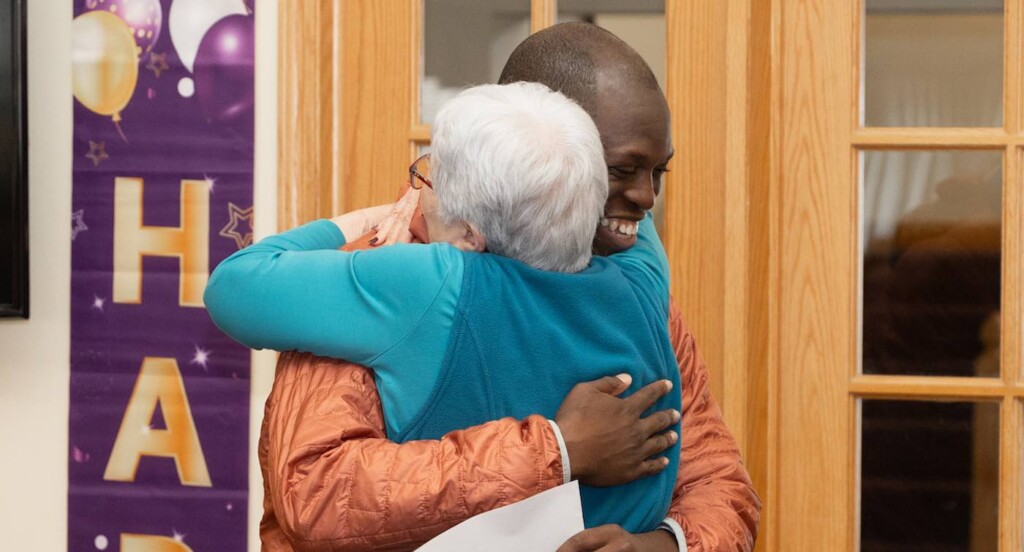
Debra Solomon could think of no other gift that would delight her mother more than to reunite her with her favorite kindergarten pupil, decades later.
Retired from 27 years of teaching, Karen Solomon was set to celebrate her 80th birthday in April—and her daughter had a great idea, although it was a long shot for success.
“I could think of only one present for my mom, a reunion with her favorite kindergarten student from the 1980s, when she taught at Laning Ave School in Verona, New Jersey.”
She Googled Seyi Fayanju and was able to reach out to him though his faculty page at Stanford University where he now works as a doctor. Luckily, the reunion was set to take place in Kenosha, Wisconsin, and Seyi has some close friends and family in nearby Chicago, so, despite his busy schedule as a doctor in Palo Alto, California, he was hopeful he might be able to make it.
“As luck would have it, the stars aligned and I was flying back from a conference on the East Coast that week, so a Wisconsin stop was added to the schedule!” he told GNN.
“He gave my mom the thrill of a lifetime,” said Debra in an email to GNN.
When the moment was ready, her granddaughter Mira guided Seyi to come through the doorway and stand right behind Mrs. Solomon.
Her daughter asked her about old students from classrooms past—and then Seyi popped out from behind.
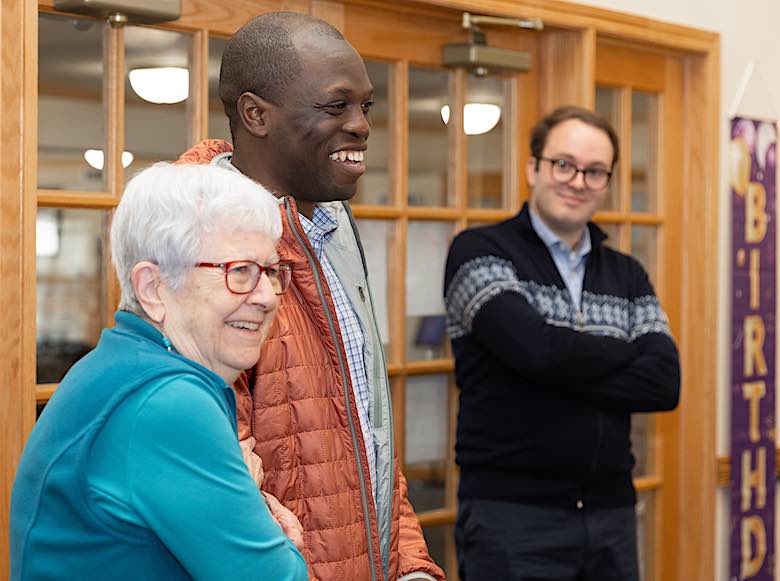
“When he appeared, my mom jumped for joy,” said Debra. “Everyone in the room was crying—tears of happiness and love.
Seyi said, “Mrs. Solomon cried, I teared up, and everyone was happy.”
“Mrs. Solomon was a phenomenal teacher, mentor, and friend for my family. When we moved to Verona, New Jersey in the late 1980s, I started in kindergarten with her where she taught us all the usual things people learn at school—but she also modeled kindness and understanding for all the kids in her classes.
“We came from very different cultures. My parents are immigrants from Nigeria, and most of the people at my Newark school were African-American or Latino. I had never met someone who celebrated Hannukah, so I learned about her culture and so much more. I think that it helped me to be more interested in learning about other cultures, which sparked a lifelong love for history and geography.”
CHECK OUT: A Teacher Promised His 1978 Class an Eclipse Party in 50 Years–And He Just Hosted It
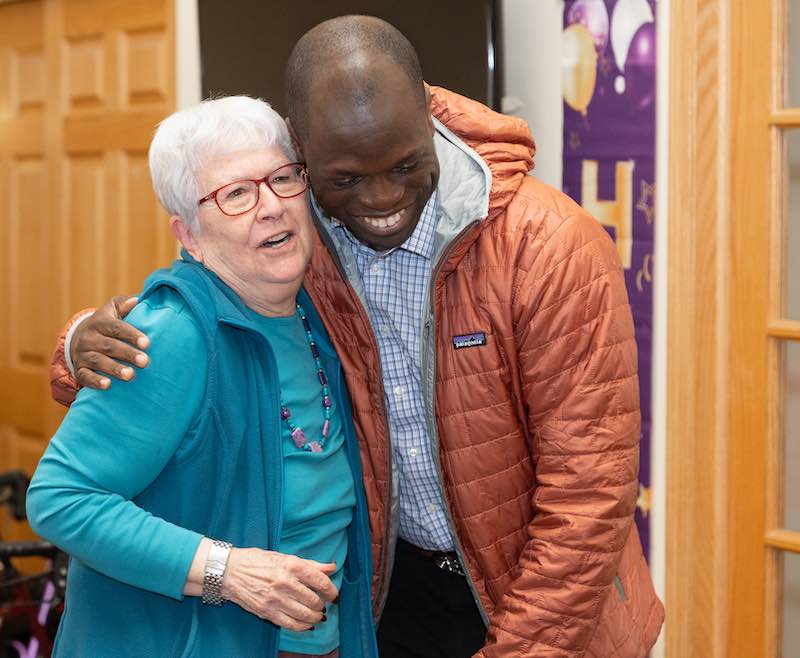
He kept in touch with Mrs. Solomon over the years, even after his family moved and she retired. During his first week of college, he sent her an e-mail to say hello and thank her for her guidance. (She was also his third grade math teacher.)
During the pandemic, his father asked ‘How is Mrs. Solomon?’ Afraid her email might bounce, he tried sending one anyway, and they connected for a video chat.
“She even wore a bracelet that my parents had given her back in the 1990s as a gift to say thanks.”
Mrs. Solomon enjoyed traveling, and Seyi says he “loved getting postcards from her every summer from cool places like San Diego and San Antonio… I still have them somewhere in my parents’ house.”
“It was great to meet her family and dozens of people who came to the party from her retirement community. I called my Dad in NJ and he said hello and congratulations by phone.
POPULAR TEACHING: High School Math Teacher Named Teacher of the Year For Her ‘One Good Thing’ Classroom Ritual
“It was such a magical afternoon and I am so glad to have been part of this special occasion for her.
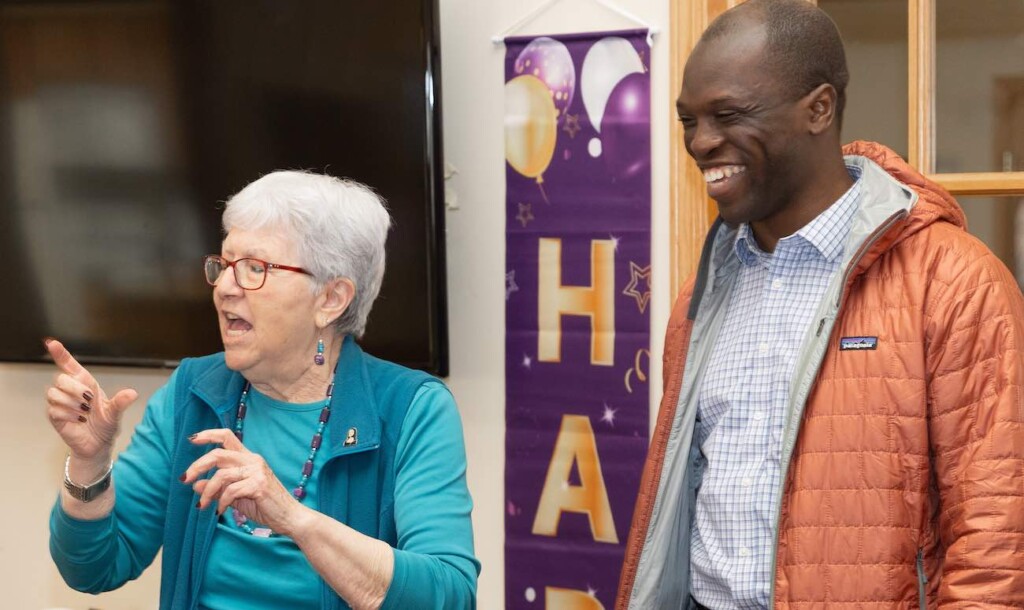
“I have been the lucky beneficiary of amazing teaching throughout my life, and feel sad that some of those amazing instructors passed on before I could tell them thank you.
“I think that if people are able, they should take the time to reach out to those teachers, mentors, and coaches that helped them to be better versions of themselves.”
Mrs. Solomon thanked her daughters saying she will never forget the incredible surprise reunion—especially when it turned out to be her favorite student.
SAY THANKS By Sharing The Story With Favorite Teachers on Social Media…
White-Tailed Eagle Breeds in Belgium for First Time in 500 Years

White-tailed eagles nesting and breeding in Belgium has been observed for the first time since Florentine explorer Giovanni da Verrazzano became the first European to look upon the island of Manhattan.
That means 500 years ago, and while they are not an endangered bird, it’s a sign of a brilliant comeback from a bird that had been heavily depopulated across most of Western Europe.
One chick was recorded hatching at De Blankaart nature reserve in West Flanders to a pair of mates called Paul and Betty, and a second chick is expected soon.
While parts of Norway, Russia, and Germany will find this bird, also known as the sea eagle or grey sea eagle, a joyous yet not uncommon sight, it’s a rare yuletide passerby in Belgium.
Rushing in to protect Paul and Betty, the local government set up an area around the nest where intruders are threatened with a fine of up to €500,000.
Recently, populations have appeared in eastern France and the Netherlands, and reintroductions have been carried out in Great Britain and Ireland. As one of Europe’s chief eagles, the return of the once widely distributed bird is long overdue.
SIMILAR STORIES: Ospreys Hunted to Extinction Are Now Breeding Across England for First Time in 200 Years: ‘A Tremendous Success’
Numbers fell particularly fast in the 20th century coinciding with an increased agricultural chemical burden that has now been largely lifted off the landscape.
As a result, there are now over 6,000 breeding pairs in Europe, and the species is listed as Least Concern by the IUCN Red List.
BIRDS COMING BACK ALL OVER: Beloved Birds Return to Islands for First Time in 40 Years After Damming Damage Reversed
Still, tell that to the Belgians who for 500 years have almost never seen an animal that was once fairly common to their land.
Iconic for Europeans as far back as 6,000 years, when sea eagle bones were ceremonially interred with human remains, they are present on coats of arms, in Pictish and other carvings, and their talons have been found to with notches cut by Neanderthals.
SHARE This Long, Long Awaited Return Of This Stunning Hunter…
Less Invasive Way to Collect Blood Is Inspired by Leeches and Needs No Medical Training
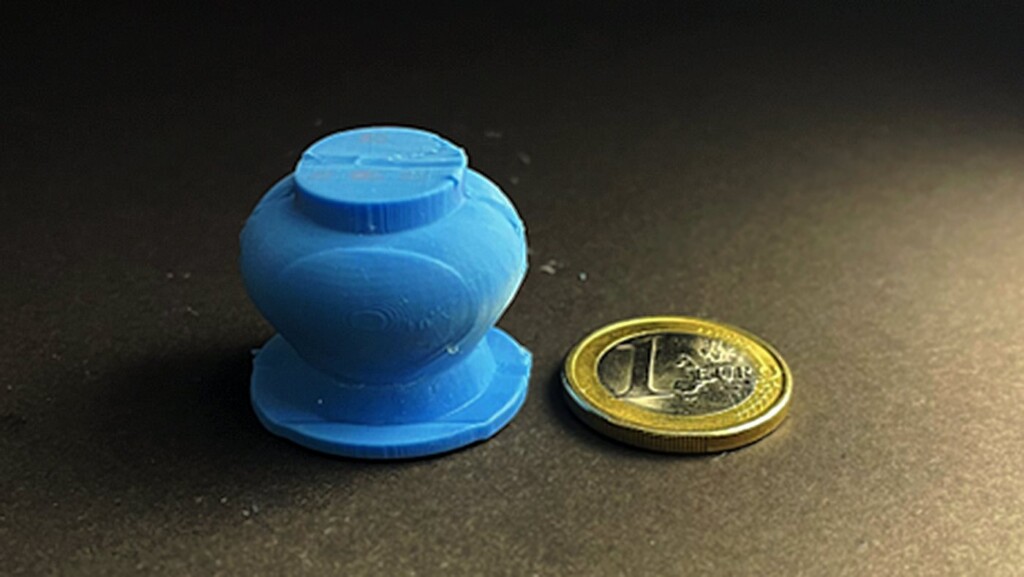
A new blood-draw device that’s painless but more reliable than a finger prick has been developed by researchers in Zurich to help physicians bypass two major problems with taking blood samples.
Needle phobia is a real thing, and can lead to sudden exhaustion, fainting, and dehydration. On the other hand, the classic finger prick device from your childhood was actually never a reliable tool, as it takes too little blood and produces imprecise measurements.
Now, a third option utilizing suction cups and microneedles will hopefully solve all these problems at once and more, since it doesn’t require any medical training to use.
The merest of drawbacks is the ghoulish inspiration the inventors drew from to design the device. Leeches attach to their hosts and suck blood by the creation of negative pressure—in other words, suction.
Rather than designing a tiny robotic leech, the team installed a series of microneedles in the center of a less-than-one-inch suction cup. When placed on an upper arm, the suction allows the needles to draw blood without penetrating very deeply at all into the skin, resulting in little to no discomfort.
The new device is very cost-effective to produce, says Nicole Zoratto, a postdoc at ETH Zurich and lead author of a paper describing her invention.
Zoratto also sees a future application for the new device in low-income regions such as sub-Saharan Africa, where tropical diseases like malaria are diagnosed through blood sampling.
CHECK OUT THIS INVENTION: ‘Wearable Muscles’ Restore Mobility in Those Who Have Trouble Moving Their Arms
No special training is needed, and the micro-nature of the needles means there’s less of a risk of injury from used needles.
Before the device can be widely used on humans the material composition still needs to be optimized, the ETH Zurich press writes. Above all, safety must be tested with a small group of test subjects. As such studies are complex and expensive, the research group is still looking for a partner for further funding, for example, a charitable foundation.
SHARE This Great Inventions With Your Friends Who Hate Needles…
“Women who seek to be equal with men lack ambition.” – Timothy Leary
Quote of the Day: “Women who seek to be equal with men lack ambition.” – Timothy Leary
Photo by: Hugo Jones
With a new inspirational quote every day, atop the perfect photo—collected and archived on our Quotes page—why not bookmark GNN.org for a daily uplift?

Good News in History, May 7

18 years ago today, at the final match of Arsenal’s home stadium of Highbury, their star forward Thierry Henry scored a hattrick against Wigan Athletic in what was a game they needed to win to secure Champions League qualification. At one point being 2-1 down, the club captain and all-time leading goalscorer Henry scored three goals in succession, concluding the moment by kneeling down to kiss the turf on what had come to be known as the “Home of Football” in London. READ more about the end of the famous stadium… (2006)
Honda to Pour $15 Billion into EV Factory in Ontario–the Largest Auto Investment in Canada’s History


In late April, Honda Motor Company announced plans to build a comprehensive electric vehicle (EV) value chain in Canada with an approximate investment of CAD$15 billion (USD$11 billion).
Consisting of four manufacturing plants for EVs, EV batteries, and battery components the first will have a production capacity of 240,000 EVs per year when fully operational, while the battery plant will produce around 36 gigawatt-hours per year.
Battery recycling and end-of-use concepts are being taken into account in the project.
Currently in evaluation phasing, the company hopes to build in Alliston, Ontario. In addition to securing the current employment level of 4,200 associates at its two existing manufacturing facilities in Ontario, Honda estimates it will add a minimum of 1,000 new jobs for the EV and EV battery manufacturing facilities.
The investment will also create significant spinoff jobs across all sites, including in the construction sector where it’s estimated that at least 4,000 tradesmen and laborers will be involved.
Honda has begun the process of evaluating the scope of its investment and completing negotiations with its joint venture partners, which includes the Federal Government of Canada who are supporting the work with CAD$5 billion. The work is expected to be finalized during the next six months.
Canadian and Ontario labor unions are scrutinizing the announcement for signs that Honda may employ foreign labor for the construction, when, they say, it should all be going to Canadians due to the presence of public money in the investment.
MORE EXCITING INVESTMENTS: India Approves $7 Billion For 10,000 Electric Buses to Clean Air in 170 Cities
Honda Motor Company, Honda of Canada, and the Canadian Industry Minister, Francois-Philippe Champagne, have all said this will not be the case, with the Honda of Canada President going as far as to suggest a memorandum of understanding be signed on the topic of foreign workers versus unionized workers for the project.
Despite a recent slowdown in the growth of EV sales, especially in the U.S., Honda, the price of which reached a new 52-week high in March, said it was sticking to its goal of selling only EVs and fuel-cell, or hydrogen, vehicles globally by 2040.
Honda of Canada recently fabricated its 10 millionth car—a gasoline-powered CRV.
MORE NEWS LIKE THIS: A Foundry Closure Devastated Tennessee Town but New Lithium Plant Brings Hope, Thanks to 2021 Infrastructure Bill

As the first step in achieving this electrification goal in North America, Honda positioned its existing auto production plants in the state of Ohio in the US as its EV hub for production, including the retooling of existing plants, an investment of USD$700 million, and the construction of a joint venture EV battery plant with LG Energy Solution, with an expected investment of USD$4.4 billion, the company said in a statement.
Honda is the only auto manufacturer outside China that reveals its near neighbor for full supply chain EV production.
SHARE This Massive Undertaking And Good News For Working Canadians…
Hake Fisheries’ Remarkable Recovery Is a Sign of Hope for Our Oceans

After decades of overfishing in the northwest Atlantic Ocean, hake fisheries off the coast of Spain are as large as ever thanks to timely and targeted conservation measures.
It’s believed that these same methods could be used in other saltwater species of economic value and have the potential to increase sustainable catch quotas of existing managed fish.
Mild, flakey, and delicious—perfect for a fry-up—hake is a huge part of Galicia’s economy and gastronomy.
But in 1980, indiscriminate fishing practices were causing catch numbers to plummet, threatening the species, the marine food web, fishermen’s livelihoods, and the cuisine of the region.
Marine conservationists stepped in, and now the stocks are stronger than ever.
Measures such as creating secure breeding areas, enforcing tight catch limits based on scientific evidence, and enlarging fishing net mesh so that juvenile hake can escape to breed, all contributed to this recovery.
Traceable, selective fishing gear also played a role, and the fishermen who cooperated are now being rewarded.
“Reaching this level of recovery and currently having an abundance of northern hake in the Atlantic isn’t an accident,” said Marine scientist Javier López from the conservation org Oceania.
YOU’LL ALSO LIKE: Shrimpers and Crabbers Get Paid to Collect Abandoned Traps, Saving Wildlife from Derelict Fishing Hazards
“It’s the result of careful management, control measures, and favorable ocean conditions. But credit must also go to the fishing sector which has endured these measures,” López told Euro News.
Meanwhile, in the Mediterranean, hake has been slower to recover. In contrast to the Atlantic, the Med is still by and large being overfished. Some Italians believe that it’s overfishing that turned the cuisine and culture of the island of Sardinia into one that focuses quite intensely on meat and dairy products.
MORE SUSTAINABLE STOCKS: True ‘River Monster’ of the Amazon Has Recovered Thanks to New Sustainable Fishing
Hake measures have been implemented more slowly, and though they are increasing, they are still at levels that could suffer sudden declines.
“The sea is generous; with the right measures in place, resources could be replenished. There are limits we must not cross, but if we act wisely, we can be confident that the fish will return,” concluded López.
SHARE This Great News For Sustainable Seas With Your Friends…
Boy Offered a Dollar to Man He Thought Was Homeless, Gets Richly Rewarded for His Kindness

The man in the purple shorts only wanted to step outside for a quiet moment of prayer whilst waiting for his coffee, but ended up attracting the attention of the young man in the grey sweats.
The meeting produced an incredible moment that fortified the man’s faith in humanity.
The story from Baton Rouge starts when Matt Musbice woke up to the fire alarm outside his condo complex. Throwing on whatever clothes he had lying around, he ran outside only to find it had been a false alarm.
Figuring that the rude awakening was irreversible, Busbice decided that regardless of his unkempt appearance, he would go get a coffee and start his day.
It was about that time that young Kelvin Ellis had entered an eyeglass shop next door with his father, but stepped out while the latter was getting his eyes examined.
Meanwhile, Busbice, who had placed his coffee order, went outside for a morning prayer, and stepped aside to the corner of the outdoor sitting area to have as much privacy as possible. That’s when Ellis spotted him.
“And I started to slowly open my eyes, and there’s a kid coming at me, about my height, grey sweats; holds his fist up,” Busbice said, adding that rather than flying into his chin, the fist was holding a dollar bill. “And I go, ‘What?'”
“‘If you’re homeless, here’s a dollar,'” 9-year-old Kelvin Ellis Jr. recalls telling Busbice. “…I always wanted to help a homeless person, and I finally had the opportunity.”
Not only is Busbice not homeless, but he’s developed several outdoor brands that have been sold in deals together worth upwards of 100 million dollars. Ellis on the other hand possessed only that dollar, which he received from his father for good grades.
Busbice told CBS News’ Steve Hartman that he had not felt faith in humanity to that strong of a degree in a very long time.
ALSO CHECK OUT: Oklahoma Teen Overcomes Shyness to Collect and Give Away 54,000 Toys
As a reward, Busbice took Ellis for a snack at the coffee house, then surprised him with a 40-second shopping spree in the sporting goods store BuckFeather, which he currently runs.
Among smaller items, Ellis grabbed a compound bow and a new bike, but said none of it is what he had planned to spend his money on.
MORE GENEROUS KIDS: Ring Camera Video Catches Teenage Trick-or-Treaters Refilling Empty Candy Bowl: ‘It feels really good’ – WATCH
“Joy, because I helped someone,” Ellis said. “Give something away, and you feel like you’ve got a lot of things from it.”
There’s a lot of merit to go around in this beautiful story—Busbice for his generosity, Ellis for his kindness, and the boy’s father for teaching him such valuable wisdom, if indeed he did.
WATCH the story below from WBRZ…
SHARE This Beautiful, Touching Encounter Between These Two Human Beings…
MIT Makes ‘Astonishing’ Discovery That Light Can Vaporize Water Without Heat–for Clean Energy and Desalination
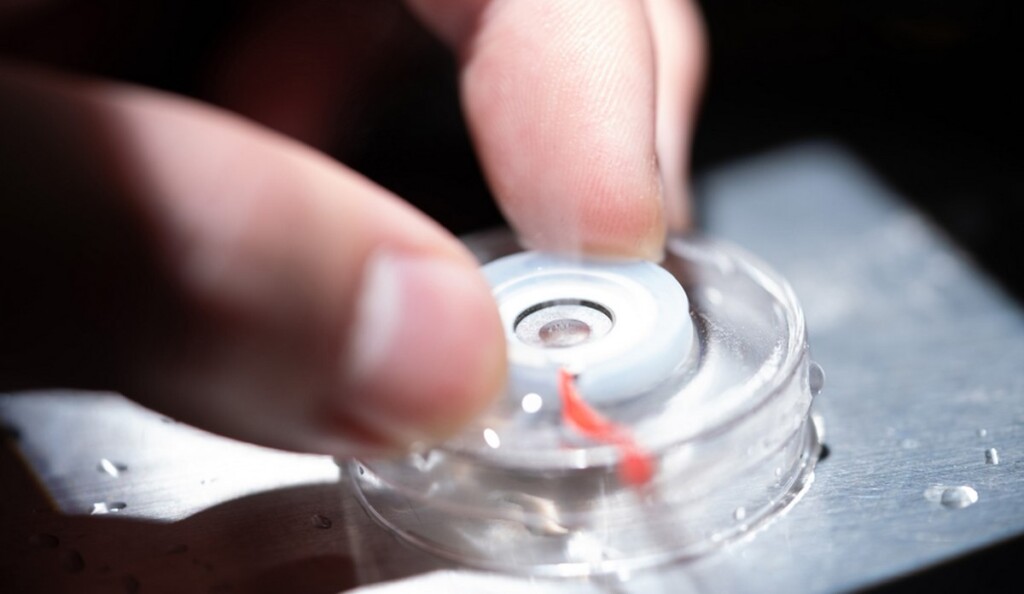
It’s not every year that a major discovery is made in the basic natural sciences of Earth, but using painfully precise measurements, MIT has written a new chapter in something that most people probably thought they knew completely: evaporation.
The scientists say the discovery could explain “mysterious measurements” in the literature of clouds which may increase the precision of climate modeling, while also aiding in industrial applications.
In this study, the discovery that evaporation can occur just with light and without heat was so unexpected and surprising that it was subjected to 14 different tests and measurements to try and disprove what the scientists observed.
One consistent finding was that the air temperature above the place at which water molecules were turning into gases would cool down briefly then level out, showing definitively that thermal energy is not required.
“I think this has a lot of applications,” said Professor of Power Engineering at MIT, Gang Chen. “We’re exploring all these different directions. And of course, it also affects the basic science, like the effects of clouds on climate, because clouds are the most uncertain aspect of climate models.”
Other fascinating details from the study include the data point that photoevaporation is strongest when the light arrives at a 45° angle, and/or when the light is on the green spectrum, which is odd, MIT press writes, because that’s the color at which water is most transparent.
Without every leaf being turned over, Chen et al.’s working hypothesis is that when arriving at sufficient angle and force, light particles can knock loose single water molecules.
MORE COOL PHYSICS: Single Atom X-rayed For First Time in Breakthrough That Will ‘Transform the World’
They have named this the photomolecular effect, by analogy with the photoelectric effect that was discovered by Heinrich Hertz in 1887.
Clouds absorb sunlight, but for 80 years, studies have consistently shown that they absorb more sunlight than conventional physics predicts would be possible.
“Those experiments are based on satellite data and flight data,“ Chen explains. “They fly an airplane on top of and below the clouds, and there are also data based on the ocean temperature and radiation balance. And they all conclude that there is more absorption by clouds than theory could calculate.”
MORE RESEARCH IS NEEDED: If Replicated, New Physics Discovery Could Grant Levitation to Any Device via Ambient Pressure Magnetics
Graduate student James Zhang, a co-author on the paper, adds that solar desalination research also shows that there are happenings beyond what conventional physics would predict based on current knowledge of how water acts.
The team believes the photomolecular effect could be behind both mysteries.
Since demonstrating the photomolecular effect at the Proceedings of the Nat. Academy of Sciences, Chen says he has already been approached by companies looking to harness this effect for everything from drying paper in a paper mill to evaporating maple syrup.
SHARE This New Chapter In Evaporation With Your Friends On Social Media…
“Forgiveness is a funny thing. It warms the heart and cools the sting.” – William Arthur Ward
Quote of the Day: “Forgiveness is a funny thing. It warms the heart and cools the sting.” – William Arthur Ward
Photo by: Bas Glaap
With a new inspirational quote every day, atop the perfect photo—collected and archived on our Quotes page—why not bookmark GNN.org for a daily uplift?

Good News in History, May 6
70 years ago today Roger Bannister, a 25-year-old British medical student, became the first man to run a mile in under four minutes—significant because for many years nobody believed it was possible, and thus no one had achieved it. As soon as Bannister set it as a goal and proved it was possible, the record lasted just 46 days—and within one year four men had matched the accomplishment. ‘Sir’ Roger Bannister went on to become a neurologist. READ more about this unique achievement… (1954)
Clever Elephant Returns Visitor’s Shoe After it Fell into his Enclosure – Watch
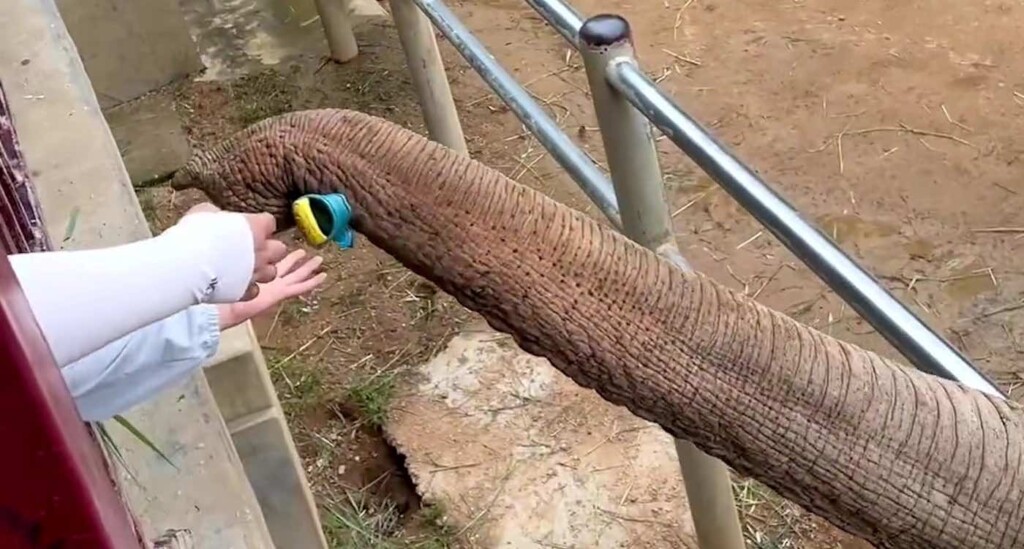
Visitors to a zoo in China captured the moment a clever elephant returned a shoe using its trunk, after it fell into the enclosure.
A video shows the animal stooping to pick up the baby’s footwear and gently lift it back up into the little child’s hand.
The elephant is named Shanmai, which means ‘mountains’, and resides at Shendiaoshan Wild Animal Nature Reserve in Weihai.
According to a staff member, the elephant first thought the shoe was food but when it realized it wasn’t upon picking it up, it returned it to its owner.
Shanmai’s keeper rewarded the animal’s kind gesture with a watermelon. Watch the moment below…
SHARE THE SMILE With Elephant Lovers on Social Media…






















